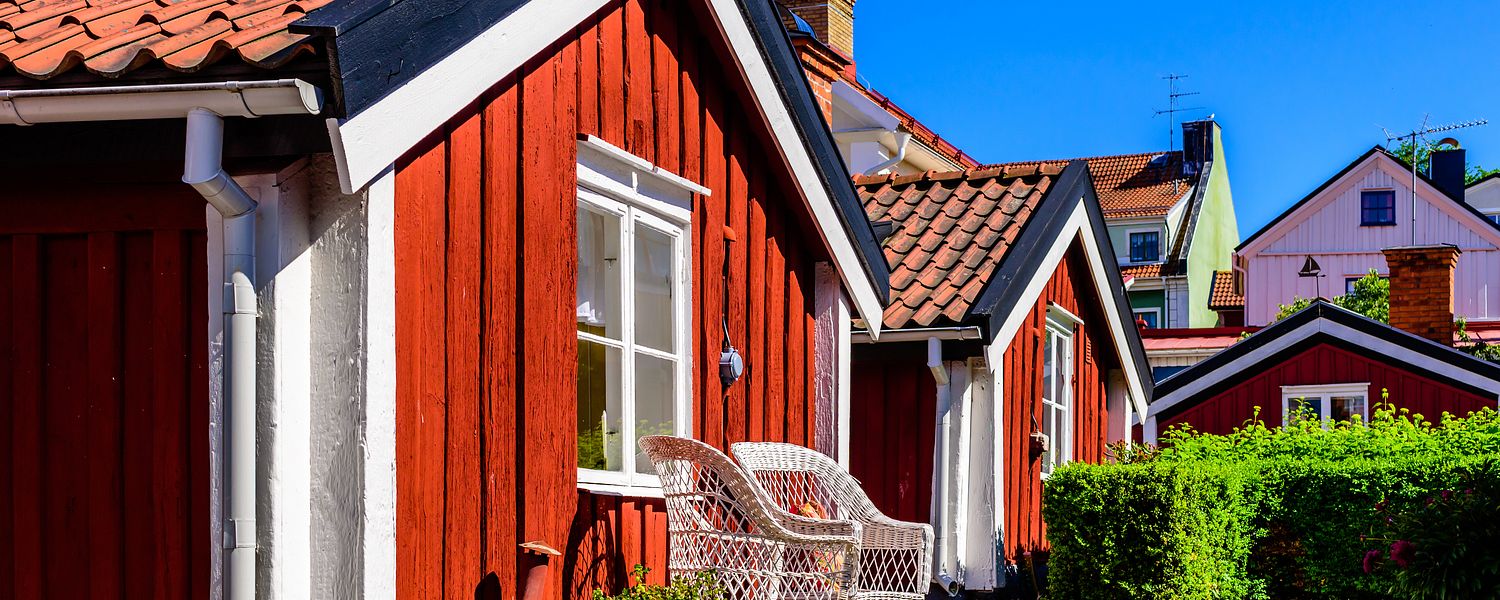
Provided by:
Imfoto/Shutterstock

Our travel guides are free to read and explore online. If you want to get your own copy, the full travel guide for this destination is available to you offline* to bring along anywhere or print for your trip.
*this will be downloaded as a PDF.Price
€4,95
The City
The guide was updated:
In the early 13th century, a few rock formations emerged above the water at the entrance to Gamlebyviken, marking the beginning of Västervik’s story. Over the years, several historical figures made significant decisions shaping Gamlebyviken and the Västervik municipality as it stands today.
The first mention of Västervik dates back to 1275 as 'villa forensis Västervik', a place west of the bay. However, petroglyphs and cairns (human-made piles of stones) indicate the district's origins in ancient times. Around 1430, King Erik of Pomerania ordered the town's relocation from within the bay to the mouth of the bay. Twenty years later, the Danes attacked the town for the first time, but it wouldn't be the last. In 1517, another Danish assault devastated much of the town, prompting a move back to the deepest part of the bay (now Gamleby). This peace was short-lived; in 1547, Gustav Vasa ordered the town back to the coast, rebuilding it around St Gertrud's Church. The 19th century saw significant developments, including a hospital, a grammar school, and a crown jail. The period from 1890 to 1920 was one of the most expansive in Västervik's history, nearly doubling the population. Landmarks such as St Peter's Church, the warm bath house, and the market hall, all distinctive features of Västervik, were built during this time.
Maritime and shipbuilding have always been vital to Västervik. King Gustav Vasa ordered a royal shipyard here, and by the mid-17th century, 80% of King Vasa's fleet was built in Västervik. In the 18th century, it was Sweden's second-largest shipyard, leading Västervik to become one of the country's leading maritime cities in the 19th century. Several companies continue this legacy, constructing boats of various sizes.
The Västervik archipelago, more accurately the Tjust archipelago, is renowned as Sweden's most beautiful. It encompasses 5,000 unexploited islets and skerries. There are numerous paths to the archipelago's sandy beaches and rocky baths. The communication and services are well-developed, preserving the pristine nature and authentic archipelago environment. This includes country stores, restaurants, hostels, guest harbours, tour boats, and taxi boats. The marine industry and craftsmanship tradition have been strong for centuries, evident in both the archipelago and mainland.
The first mention of Västervik dates back to 1275 as 'villa forensis Västervik', a place west of the bay. However, petroglyphs and cairns (human-made piles of stones) indicate the district's origins in ancient times. Around 1430, King Erik of Pomerania ordered the town's relocation from within the bay to the mouth of the bay. Twenty years later, the Danes attacked the town for the first time, but it wouldn't be the last. In 1517, another Danish assault devastated much of the town, prompting a move back to the deepest part of the bay (now Gamleby). This peace was short-lived; in 1547, Gustav Vasa ordered the town back to the coast, rebuilding it around St Gertrud's Church. The 19th century saw significant developments, including a hospital, a grammar school, and a crown jail. The period from 1890 to 1920 was one of the most expansive in Västervik's history, nearly doubling the population. Landmarks such as St Peter's Church, the warm bath house, and the market hall, all distinctive features of Västervik, were built during this time.
Maritime and shipbuilding have always been vital to Västervik. King Gustav Vasa ordered a royal shipyard here, and by the mid-17th century, 80% of King Vasa's fleet was built in Västervik. In the 18th century, it was Sweden's second-largest shipyard, leading Västervik to become one of the country's leading maritime cities in the 19th century. Several companies continue this legacy, constructing boats of various sizes.
The Västervik archipelago, more accurately the Tjust archipelago, is renowned as Sweden's most beautiful. It encompasses 5,000 unexploited islets and skerries. There are numerous paths to the archipelago's sandy beaches and rocky baths. The communication and services are well-developed, preserving the pristine nature and authentic archipelago environment. This includes country stores, restaurants, hostels, guest harbours, tour boats, and taxi boats. The marine industry and craftsmanship tradition have been strong for centuries, evident in both the archipelago and mainland.


